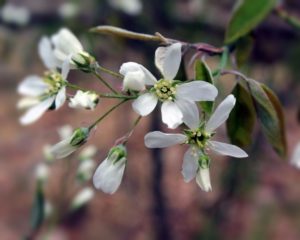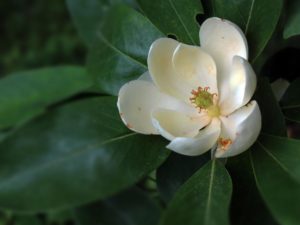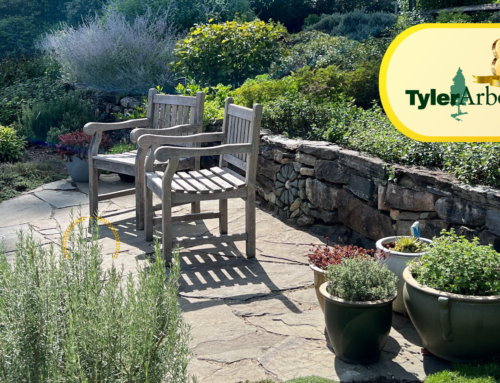Most trees you can grow at home will provide ecological value, but some more than others, particularly if they are native to your area. Beyond carbon fixing, air purification, water regulation and temperature control, native trees are additionally beneficial to insects, birds and mammals. Insect value can be pollen and nectar for native pollinators or larval host to butterflies and moths, as well as overwintering protection for pupa and adults. Birds benefit from the protein in insects, particularly butterfly and moth larva for nestlings, nesting cavities and shelter, plus food for local and migrating species. What follows are two suggestions for small to medium properties. Remember to plant for the tree’s preferred soil and light conditions as well as for its ultimate size.
The native Amelanchier laeveis is one of the earliest small trees to bloom in spring, and its early summer fruits are nourishment for many bird species. Commonly called serviceberry, shadblow, sarvisberry, and shadbush, it is easy to grow in many gardens, preferring moist soils. It flowers and fruits best in full sun. At 15’–30’ tall and 8’–20’ wide, it is a medium tree. These trees are usually multi-stemmed but are also available as single trunk specimens. The emerging new foliage is purple and turns dark green. The fall color is yellow to red. The spring blooms are clusters of white flowers that emerge just before or with the new leaves. Flowers provide early season nectar and pollen for pollinating insects. Nectar and pollen from serviceberry flowers help to build up the strength of bee colonies in the spring. The flowers are followed in June by pinkish-purple, very nutrient dense fruits for birds like cardinals, robins, cedar waxwings, Eastern bluebirds and many warblers and woodpeckers. Amelanchier is also the larval host for several butterfly species including striped hairstreak, white admiral, viceroy and the sphinx moth.
Magnolia virginiana or sweetbay magnolia is another attractive and beneficial native tree. Its size is 20’ – 30’ tall and 10’ – 15’ wide. It can be single trunked or multi-stemmed, with smooth gray bark. The sturdy green leaves have silvery undersides and are semi-evergreen in the south but deciduous in our area. Creamy white blossoms, which have a vanilla or lemon scent depending on your olfactory make-up, are followed in fall by woody fruits with bright red-orange seeds favored by native and migrating birds. The magnolia is an ancient genus which evolved prior to bees, and they were originally pollinated by beetles, although bees also take advantage today. It is a larval host tree for the Eastern tiger swallowtail butterfly.
If you happen to have space for larger trees and want to increase the ecological value of your property, look for Doug Tallamy’s books, “Bringing Nature Home” or more recently, “Nature’s Best Hope” or similar. These will help you do your part in that little piece of the earth you can affect — your own backyard.








